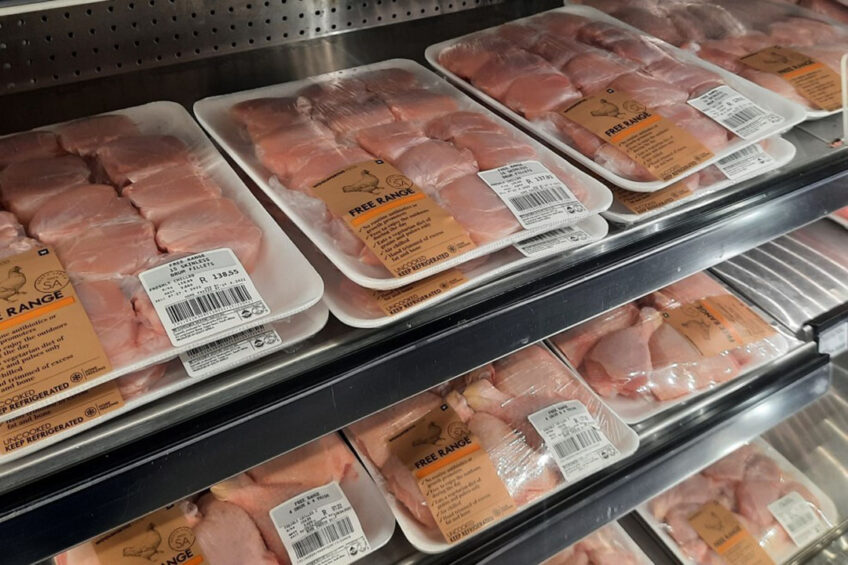South Africa: Should VAT and tariffs be lifted on chicken?

The South African Informal Traders Alliance (SAITA), which claims to represent over 2 million informal and micro businesses, has asked the government to remove tariff taxes and VAT on chicken products. However, Izaak Breitenbach, head of the Broiler Organisation at the South African Poultry Association (SAPA), says that consumers will be the ultimate losers if tariffs on chicken imports are removed.
As prices for poultry, an important food source, continue to escalate, SAITA said the removal of tariff taxes and VAT would provide informal traders and consumers from low-income households with the appropriate relief.
The most common products sold by informal traders and spaza shops are fruit and vegetables, chicken and eggs, dairy products, chips, sweets, cold drinks, and tobacco products.
Rosheda Muller, SAITA national president, commented that the cost of living in the country “seems to be rising to unsustainable levels” and noted that wages are not moving in the same direction. “Chicken is perhaps the most important part of our diet, and often the only meat that communities can afford,” she said, adding that the price of all nutrition-rich products eaten in poorer communities is going up. Citing annual data from the Pietermaritzburg Economic Justice & Dignity Group, Muller said this includes:
- Eggs (+15%)
- Chicken feet (+10%)
- Chicken gizzards (+15%)
- Liver (+32%)
- Beef liver (+30%)
- Beef (11%)
- Wors (+11%)
- Polony (21%)
- Fish (7%)
- Canned pilchards (9%)
- Chicken pieces (+11%).
“When food prices increase to these levels, people go hungry and they don’t get the nutrient-rich foods they need to stay healthy.” she said.
“Consumers will be the ultimate losers”
The proposal by Paul Matthew, CEO of the Association of Meat Importers and Exporters (AMIE), to suspend existing tariffs and not impose any new tariffs for the next 3 years is superficially appealing but economically dangerous, said Izaak Breitenbach, head of the Broiler Organisation at the South African Poultry Association (SAPA).
He said it would benefit the importers whose revenues and profits have been hit by decreases in import volumes over the past 3 years, but it would threaten the South African poultry industry “which is recovering from the damage caused by decades of unfairly priced, dumped, and predatory chicken imports”.
It would have no impact at all on the main drivers of food price inflation – the surge in feed, fuel and fertiliser prices – because of the war in Ukraine, he said. This has come when prices were already rising because of the impact of the Covid-19 pandemic on global trade and the price of grains which make up nearly 70% of the input costs for poultry producers.
The poultry master plan
The poultry sector master plan, which was implemented in 2019, aims to curb imports and expand local demand and local production for the South African and export markets, meanwhile creating nearly 5,000 local jobs.
Removing all tariffs and guaranteeing no new tariffs for 3 years would lead to a flood of dumped and predatory chicken imports, said Breitenbach, adding that the biggest impact would be felt by small-scale independent producers.
“Local production has been constrained”
The AMIE contends that South Africa’s local chicken industry is unable to meet local demand. However, Breitenbach states that “what is true is that local production has been constrained by predatory imports, which have taken much of the recent growth in demand.”
AMIE also contends that tariffs, such as the increase to 62% for bone-in portions which came into effect last March – are “unsustainable”. The fact is that provisional anti-dumping duties were imposed in December because foreign producers have been selling chicken portions to South Africa below their cost of production, and below the price the product is sold for in their home market, said Breitenbach in a statement. “Even after the 62% tariff, landed prices from some of these countries are still below South African producer prices. That is not fair trade,” he said.
Slow progress for exports
In terms of exports, Breitenbach said that SAPA is working with local producers and government to increase poultry exports. “Progress has been slow… For now, the industry has made the decision to export breast meat to the EU and the process of accrediting South Africa for the export of cooked and partially cooked product has begun. This will increase the composite income from a whole chicken and put the industry in a position to put even more competitively priced chicken meat on the plate for South Africans.”












